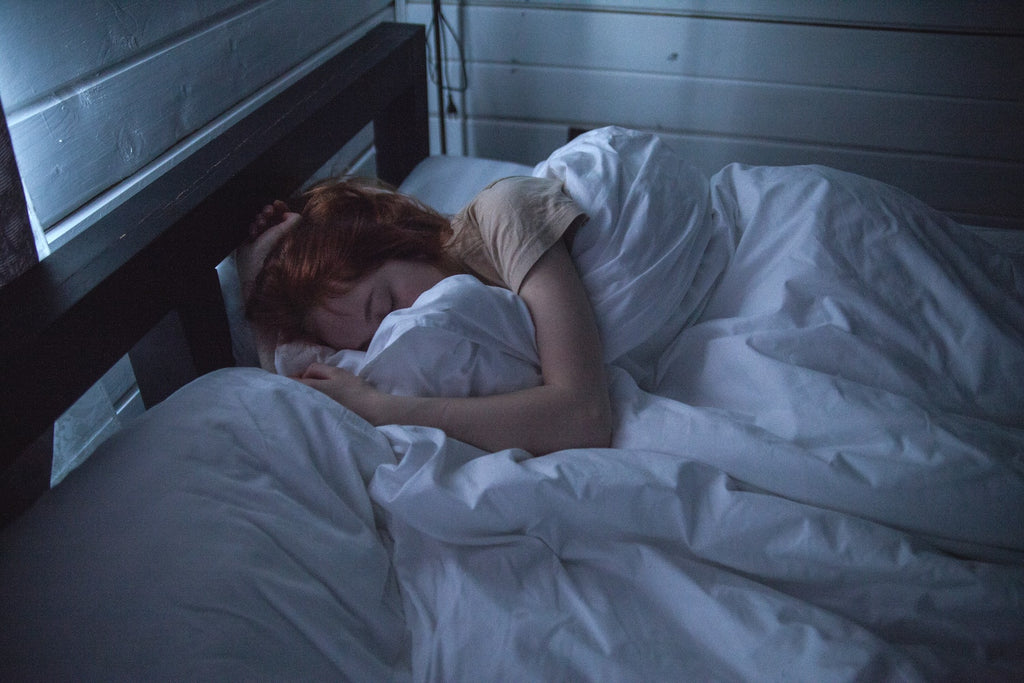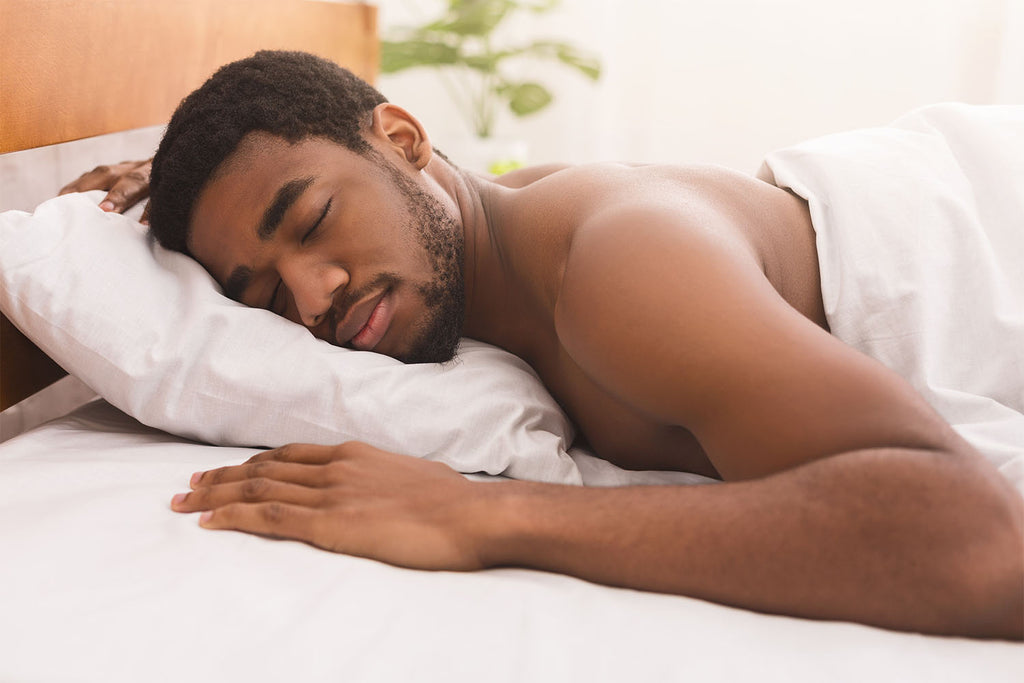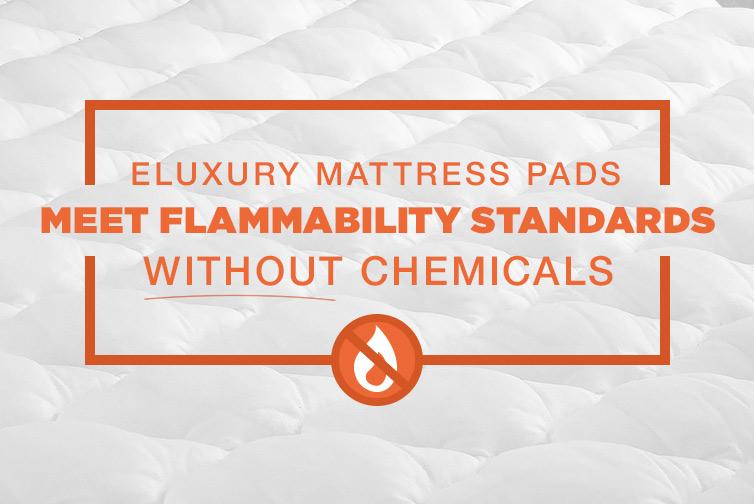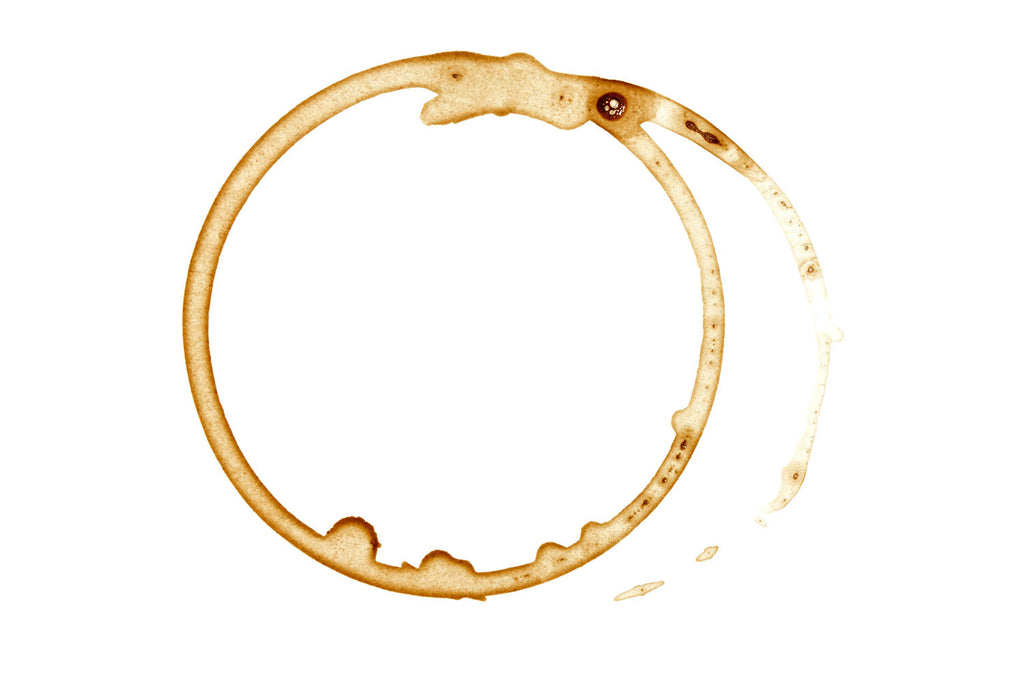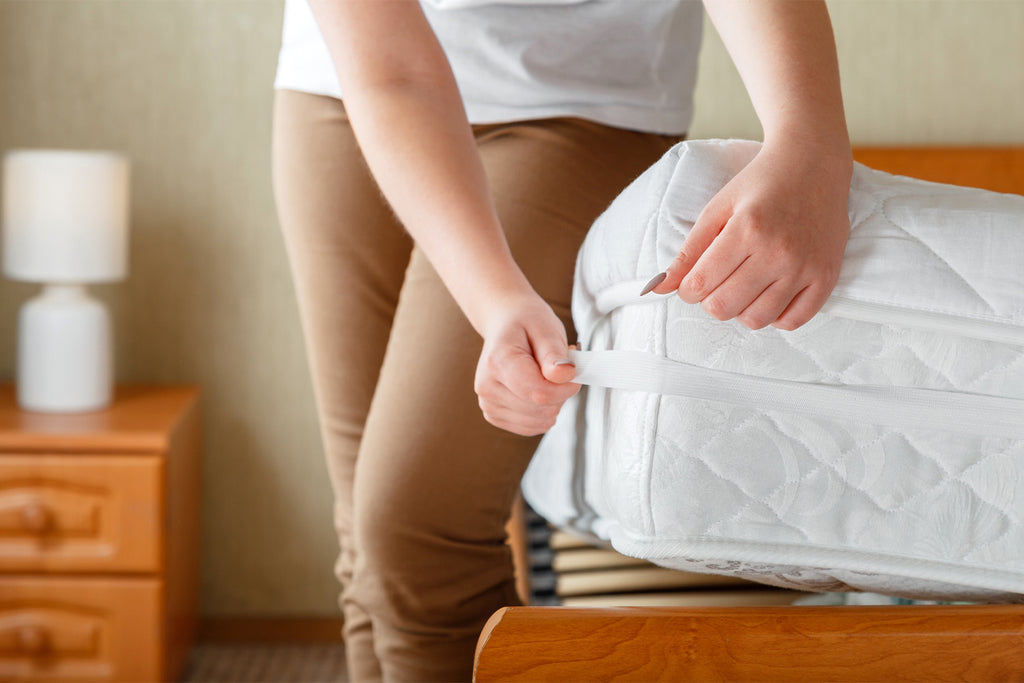
Can You Wash Mattress Pads?

Mattress pads add some extra comfort to your bed and prolong its overall lifespan. However, your mattress pad won’t be able to reach its full potential if you don’t keep it clean. You should keep your mattress pad as clean as you can so you can keep getting the most out of it!
You may be apprehensive about washing your mattress pad because the process seems complicated. It’s so simple to wash your other bedding — your fitted sheet, top sheet, and comforter can all go straight into the wash without any worries.
Washing a mattress pad may seem complicated at first. However, once you know the proper steps, getting the pad nice and clean is a quick and simple process. Read on to learn how to wash all the different types of mattress pads and how to get even the toughest stains out.
Mattress Pad vs. Mattress Topper: What’s the Difference?
Before we get into how to wash your mattress pad, let’s make sure that you are not here to learn about washing mattress toppers.
People often confuse these two pieces of bedding since they can look similar and have similar names, but they perform different functions and are washed differently.
Mattress Pads
Mattress pads are designed to make a bed more comfortable. In addition, one of their main aims is to protect the mattress from any unexpected spills, food mishaps, and other issues you may encounter. Since your mattress pad is the first line of defense against stains, it’s essential to keep it clean.
Mattress Toppers
Mattress toppers, on the other hand, are meant to change the feel of your mattress and specifically work to relieve any excess pressure you feel in your muscles and joints. Toppers tend to include hooks or a fitted skirt that you attach to the mattress. Checking for these features is the easiest way to tell the difference between mattress toppers and pads.
How Do You Clean a Mattress Pad? The Best Mattress Pad Cleaning Tips
Now that you know the difference between a mattress topper and a mattress pad, let's get into how to clean a mattress pad.
There are a variety of different kinds of mattress pads, and each has unique cleaning needs, so make sure you find which method works best for your specific mattress pad.
Below, you’ll find quick and simple washing instructions for cleaning the most common types of mattress pads.
Cotton Mattress Pads
If you have a mattress pad made from cotton, you should clean it at least every two months.
Most mattress pads have general care instructions. However, if you can’t find any, a general rule for cleaning cotton mattress pads is to throw them in the washing machine using warm water and a particularly mild detergent.
When it comes to drying a cotton mattress pad, the best settings are tumble dry or anything similar. Try to dry it using the lowest temperature setting.
Before drying your cotton mattress pad, consider throwing a tennis ball in the dryer to keep the pad fluffy. In addition, if you are worried about the pad getting damaged in the dryer, you can always air-dry it.
Vinyl-Backed Mattress Pads
If your mattress pad is vinyl-backed, the instructions are fairly similar to how you’d clean a cotton mattress pad.
You can throw a vinyl-backed pad in the washing machine (unless any care labels tell you otherwise), and you should always use cold water for this type of material. Wash on a gentle cycle with some gentle detergent.
Bleach can cause damage to these types of mattress pads — specifically to the backing. Additionally, when drying these mattress pads, toss them in the dryer on low heat instead of high heat.
If you plan on air-drying this mattress pad, you can easily make use of a clothesline outside. Just make sure it’s fully dry before bringing it in to avoid a buildup of mildew or any other odor-causing bacteria.
Memory Foam Mattress Pads
Memory foam mattress pads are known to be more delicate than mattress pads made from different materials, so these require some specific care when it comes to washing.
We do not recommend putting them in the washing machine since they can be torn easily when wet. They can even melt if you put them in the dryer at a high temperature.
To clean these mattress pads, hand-wash them with a simple cleaning solution. Mix together two parts water and one part of a mild detergent and place that into a spray bottle.
Once you have your mixture, you can remove the mattress pad from your bed and lay it flat on the ground. Spray the entirety of the mattress pad with this mixture and allow it to sit on the pad for 20 to 30 minutes.
You can repeat the process on the opposite side of the pad, and then once this is done, bring the pad over to the shower. Rinse the pad out with some water, then squeeze out any excess moisture.
The drying process for this method may take quite a while. Lay the pad down in a clear, flat space and let it dry for several days. You should flip the pad two to three times during this process so that it dries evenly.
Egg Crate Mattress Pad
For an egg crate mattress pad, one of the best cleaning methods starts with removing it from the bed and grabbing a vacuum.
Once you have the vacuum, use a handheld attachment to get any remaining dirt, allergens like dust mites,dead skin cells, and debris off both sides. If you know that the pad is machine washable, make sure your washing machine is oversized since smaller washers could damage the material.
You can wash the pad on the delicate cycle using a mild detergent. Alternatively, you can follow the same instructions for washing foam mattress pads above. Just make sure you use this cleaning solution: equal parts water, white vinegar, and lemon juice.
Once you have that all set, the same steps and procedure from the foam cleaning guide will work.
Down Mattress Pad
If you have a down mattress pad and it is machine washable, try and use a front-load washing machine whenever possible. Doing so will prevent any damage to the mattress pad since this type of washing machine is meant to take on bulkier items.
For down mattress pads, try drying on the lowest heat setting available. Every 15 minutes, stop the dryer and take the pad out to redistribute its weight. Pat down any sections that have large clumps so that your mattress pad is nice and flat. This step will also help the down dry evenly and prevent any sort of mildewbuildup from occurring.
How Do You Treat Stained Areas on Mattress Pads?
Sometimes mattress pads get trickier stains that can be more difficult to remove.
Mattress pads often develop a yellowish tinge over time. This staining could come from a number of different sources, such as sebum (oil), sweat, or spills. Sometimes, a simple wash is not enough to remove these stains.
If you’re dealing with yellow stains on your mattress pad, Try this simple solution to spot-clean those stains and keep your mattress padhygienic and looking its best.
Fill a spray bottle with equal amounts of white vinegar and water and spray this mixture across any stained areas.
Remember, don’t use too much of the solution on the pad since this could cause issues with water buildup. After spraying, cover the pad with baking soda and let it sit for at least eight hours. Vacuum up any remaining baking soda after this amount of time and repeat as many times as necessary until the stain is fully removed.
If you find that this solution isn’t working for you, an enzyme cleaner can be a solid plan B. If the stain is from something like urine or blood, the enzyme cleaner is powerful enough for the job and should be able to knock it out easily.
What To Remember
In short, you should clean your mattress pad fairly often. Aim for a clean at least every 2-3 months to prevent any buildup of stains and any other unwanted issues.
Each mattress pad has different ideal methods of cleaning, so remember to always check and see if your pad is machine washable and what material it is made from. If you are struggling to get rid of stubborn stains, use a mixture of white vinegar and cool water combined with baking soda sprinkled over the top of your mattress pad. After that, it should look good as new!
Sources:
Dust Mites | American Lung Association
How to Prevent and Remove Mildew — Home Methods | MU Extension

